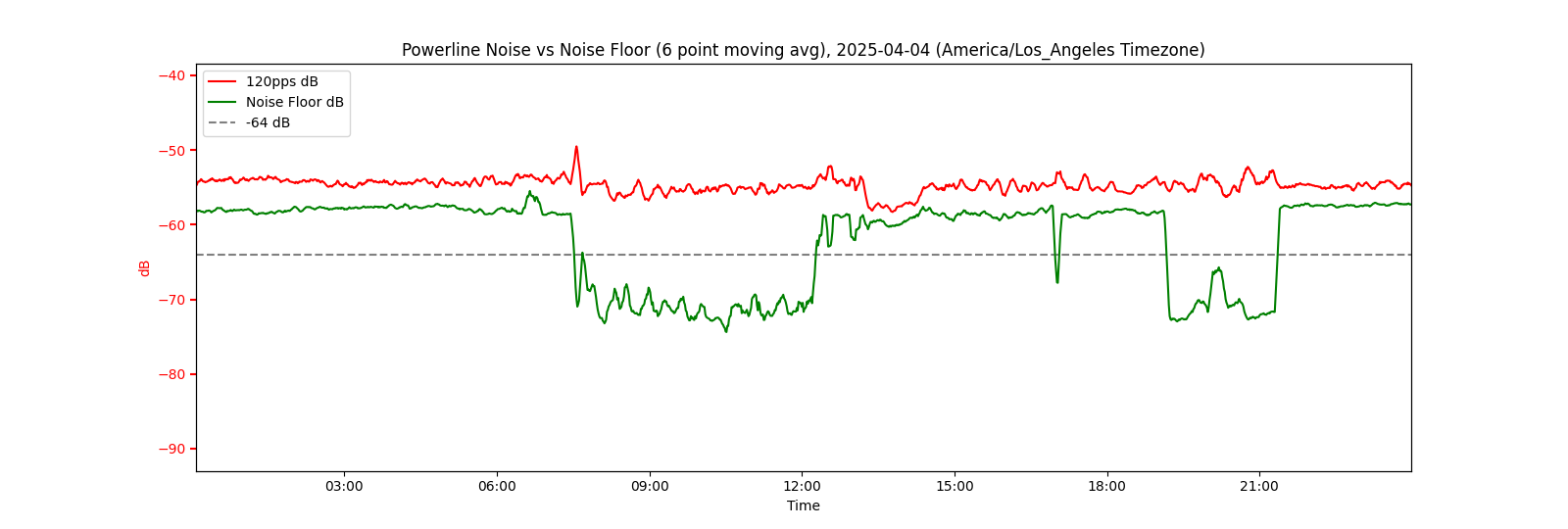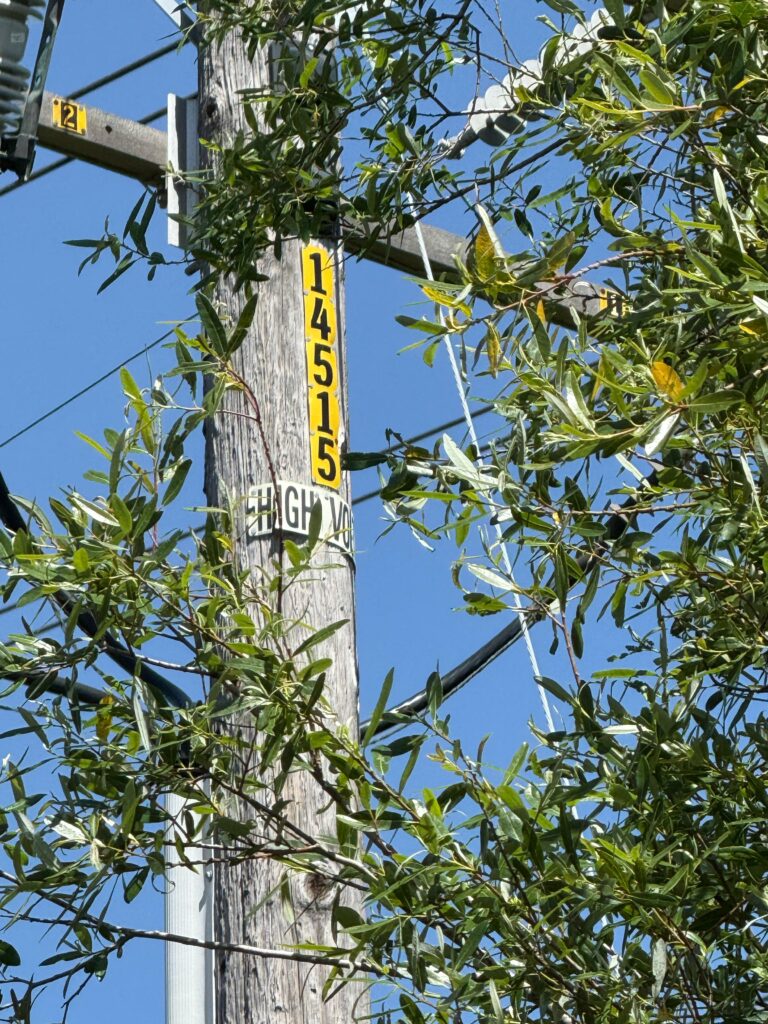It should come as no surprise to anyone that after insisting I open a new case for the secondary source of QRM from PG&E, nothing further has been done. I opened that case, as requested, back on May 16, and the QRM continues to follow a fairly predictable pattern, so much so that I can say with pretty high confidence that someone will hear it around 8 AM, 2 PM, and 8 PM most every day, more when it’s hot and dry.
A few things have happened though. Last week PG&E finally responded to the CPUC regarding my original complaint that they were dragging their heels and not doing their job to ensure their equipment was maintained properly and safely. I know it’ll come as a tremendous shock that PG&E misrepresented or omitted key facts in their response to the CPUC. Naturally I couldn’t allow a factual misrepresentation in their response stand, so I took advantage of the CPUC’s “one and only one opportunity” (how they put it) to set the record straight.
(You read that right: the CPUC will only allow you to respond once after the utility sends their response, and they warn you that unless you provide them with some new and compelling evidence, they’ll kick you to the curb. They’re not even vaguely nice about it.)
I corrected the record thusly:
- My initial trouble report was made to PG&E on March 12.
- PG&E assigned someone to work on this case only AFTER my informal complaint to the CPUC was forwarded to them on April 12. Until that point, they had completely ignored my trouble report. My first contact from PG&E regarding my case was on April 16, and it still took them almost 30 days, until May 9, to assign someone to look into a safety issue that could have started a fire. “Complain to the CPUC just to get PG&E’s attention” is not a scaleable process.
- Upon assigning telecom techs to the issue, PG&E found exactly what I said they would find, exactly where I said they would find it: high-voltage power was arcing across a failing insulator a short distance from our house.
- The problem was severe enough that their techs told me they could actually hear the arcing when standing below the pole. This is rather different from PG&E’s initial characterization that there was nothing wrong.
- On May 14, PG&E replaced failing insulators on the pole in question. There is no dispute that PG&E equipment WAS at fault. It took them more than 60 days from my initial problem report to get to this point.
- However, a problem is still unresolved and threatens safety: there remains a secondary source of interference of exactly the same type, apparently originating within the Poplar substation (based on radio direction-finding I’ve undertaken on my own time and at my own expense).
- PG&E insisted that I open a NEW case for the secondary source of interference, which persists in an unresolved state to this day. The new case number is [redacted], opened on May 16. It has not been addressed at all.
- Given the interference is of exactly the same type, it is reasonable to suspect the cause is likely similar: high voltage electrical arcing, the type which can start fires, and which has started fires in the past.
- There remains a threat to public safety any time PG&E’s infrastructure is experiencing electrical arcing. PG&E should not be ignoring these early warning signs.
The CPUC took about a week to respond, and when they finally did, they seemed to accept my “new evidence” and forwarded it on to PG&E.
The very next day someone from PG&E actually showed up at my door to ask about the issue; I explained that it’s been an ongoing problem for well over 100 days now (112 days when he turned up), that it’s a 120 pulse-per-second interference that appears to be originating at the nearby substation, and that it is possible to discern it now that the nearby pole has been fixed. He indicated that he’d arrange to have the telecom guys come out again and hunt for the source of interference.
We’re now up to 117 days since my original case was opened, and 52 days since my most recent case was opened regarding the substation QRM source.
To an outside observer, it appears that PG&E’s policy is to ignore these problems entirely for at least 2 months before taking any action, and I have no idea if they’d have ever taken action at all if I hadn’t opened a complaint with the CPUC. Even after a CPUC complaint, it can still take 3 weeks before someone is finally scheduled to come out and hunt for the arcing. These data fly in the face of PG&E’s ongoing PR effort in which they want to appear as though they place a high priority on safety.
If they really cared about safety, and someone was telling them they had equipment that was arcing near a field full of dry grass, you’d sure think they’d put a priority on finding the source and fixing it as quickly as possible.
Fixing problems costs money, though, and things that cost money cut into profits. For-profit corporations will never do the right thing voluntarily if the right thing costs them money. They can only be forced to do so by a regulatory body.


